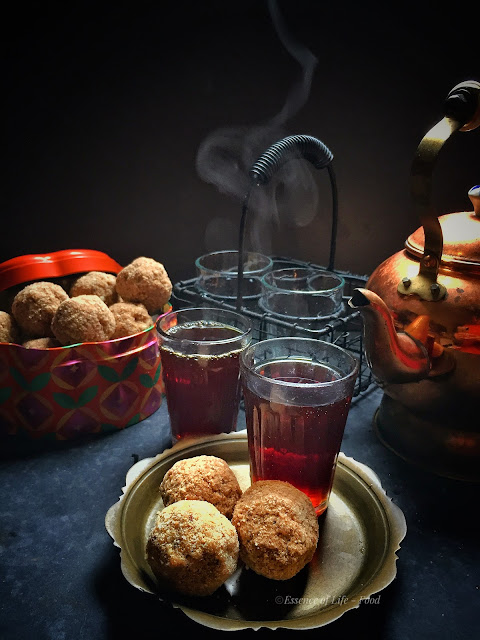 |
| PAV BHAJI |
Eventually, this tasty combination of Bread and Bhaji took its own place in every nook and corner of Bombay streets. The popularity of the dish slowly seeped into the other States of India making it one of the most sought Indian Street Food ever. Though Pav Bhaji was initially served as a main course for Lunch, it masqueraded itself into a popular evening snack.
Pav Bhaji is a combination of Bread/Bun colloquially called the PAV served with BHAJI(mashed vegetables). Pav Bhaji is a spicy blend of classic vegetables like Carrot, Beans, Potatoes, Cabbage, Cauliflower, Green Peas etc., The basic taste and flavour of Pav Bhaji come from fresh and flavour-filled PAV BHAJI MASALA. Home-made or store-bought, make it sure that it is fresh and never compromise with the quality of Spices or the Masala Mix.
According to me, Pav Bhaji is not a mere snack. I usually prepare this as a quick meal, as my kids love Pav Bhaji and all the more it is easy to cook. The total idea of preparing Pav Bhaji got into my mind only when my friend 'Suchi', brought home freshly made Pav Bhaji for dinner. She is a wonderful cook, a great host and a very sweet person. I asked her for the recipe and since then Pav Bhaji is one main dish I frequent for dinner.
I usually stock up few batches of Everest Pav Bhaji Masala from India, but recently I have started to make my own Pav Bhaji Masala at home. Freshly made Pav Bhaji Masala gives an extremely wonderful flavour to Pav Bhaji. I usually cook Pav Bhaji in a Pressure Cooker which is less time consuming and the texture of the mashed vegetables turn out to be quite perfect sealing the flavours of the Pav Bhaji Masala.
For more CHAAT ITEMS/INDIAN STREET FOOD, Click here...
Cuisine - Indian
Recipe Type - Chaat (Snacks)
Spice Level - Low - Medium
Difficulty - Easy
Author - SM
Preparation Time - 20-30 Minutes
Cooking Time - 20-30 Minutes
PAV BHAJI
INGREDIENTS :
For the Pav
Pav - 10 -12 BunsButter - 5-6 Tbspns
For the BHAJI :
Vegetables :
Carrot - 1 CupPotatoes - 11/2 Cup
Cauliflower - 1/2 Cup
Cabbage - 1/2 Cup
Beans - 1/2 Cup
Green Peas - 1/2 Cup
To Grind :
Dry Red Chillies - 3 Nos.Ginger - 1" Piece
Garlic - 6-8 Cloves
Spice Powders :
Turmeric Powder - 1/4 TspnRed Chilli Powder - 1 Tspn
Pav Bhaji Masala - 11/2 Tbspn
To Saute :
Onion - 2 Nos.Tomato - 2 Nos.
Butter/Oil - 2-3 Tbspn
Salt - To Taste
Sugar - a Pinch
To Garnish Pav Bhaji :
Onion - 1 No.(finely Chopped)Coriander Leaves - Few (finely Chopped)
Lemon Juice - 3-4 Tspns
METHOD :
For the Bhaji :
- Finely chop/grate the Carrots, shred the Cabbage and Cauliflower, finely chop Potatoes and Beans.
- Grind the ingredients mentioned under 'To Grind' into a fine paste and keep it aside.
- Heat Butter/Oil in a pan, sauté the Ginger-Garlic and Red Chilli Paste until fragrant on a low flame.
- Add finely chopped Onions and sauté until onions turn translucent.
- Add Turmeric Powder, Red Chilli Powder and Pav Bhaji Masala to the sautéed ingredients and fry for a while on a low flame until aromatic.
- Add finely chopped Tomatoes and mix well.
- Leave this on a low flame until Tomatoes turn soft and oil separates from the mix.
- Add finely chopped Vegetables to the Pav Bhaji Masala along with a dash of Salt, a pinch of Sugar and mix well.
- Pour 1/2 Cup of Water to the Vegetable mix and give a quick stir.
- Pressure Cook the Vegetables along with Pav Bhaji Masala.
- Cover the lid of the Pressure Cooker and cook on a high flame for a Whistle, lower the flame and cook for other two whistles.
- Switch off the flame.
- Once the pressure is completely released, open the lid of the pressure cooker.
- Drizzle few drops of Lemon Juice over the Pav Bhaji Masala and mix well.
- Mash the cooked Vegetables with a Masher until all the ingredients and vegetables are well incorporated.
- Adjust the consistency of the Pav Bhaji Masala.
- Garnish Pav Bhaji Masala with finely chopped Coriander Leaves.
For the Pav :
- Slit the Pav Buns in the centre with a bread knife.
- Apply Butter on both the sides(inner part) of the Pav Buns and toast them on a griddle over a medium flame.
- Toast the Pav Buns until they turn slightly golden brown.
SERVING SUGGESTION :
 |
| PAV BHAJI |
- Scoop a lavish amount of Bhaji and stuff it up at the centre of the toasted Pav Buns, fill it up with a handful of finely chopped Onions and Coriander Leaves.
- Alternatively, Serve Toasted Pav Buns and Pav Bhaji Masala separately along with the garnishes.
- Add a dollop of Butter to the Pav Bhaji Masala.
- Drizzle few drops of Lemon Juice and sprinkle some Pav Bhaji Masala/Chaat Masala over it.
NOTES:
- Can use any variety of Vegetable to suit your preference.
- Can cook the Vegetables separately and the mix it along with the sautéed ingredients and Masala.
- Can cook Potatoes separately, mash them and then add it along with cooked vegetables.
- I usually prepared Bhaji in a Pressure cooker in the above method given in the recipe.
- Butter gives an authentic taste and flavour to Pav Bhaji.
- Some recipes call for red food colouring, as the street vendors sell fiery red coloured Bhajis.
- I usually do not use food colouring in the recipe.
- Adjust the amount of spices to suit your spice level.
- Mash the Vegetables with a 'Masher' until you get a silky texture.
- Serve hot Bhaji with a blob of butter along with toasted Pav Buns.














0 comments